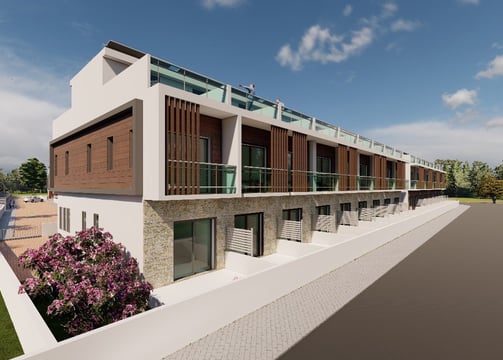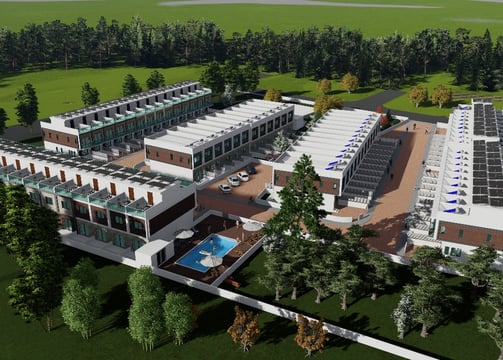Connecting U.S. Investors with Global Development Potential
The decision for asset managers in the USA to collaborate with developers abroad, particularly in countries offering high yields, is a multifaceted one. It requires a thorough understanding of various economic indicators, market dynamics, and geopolitical factors. This analysis will delve deeper into these considerations and identify specific countries that present viable opportunities for US investors.




Understanding High-Yield Markets
High-yield markets are typically characterized by higher returns on investments compared to more stable but lower-yield markets. The potential for high yields can arise from several key factors:
Economic Growth
Countries experiencing rapid economic growth often present opportunities for higher returns. Economic indicators such as GDP growth rates, employment rates, and consumer spending can provide insights into a country's economic health. For instance, nations with burgeoning industries or those transitioning to more developed economies may offer lucrative investment opportunities.
Real Estate Demand
A growing population or urbanization can drive demand for real estate. As cities expand and populations increase, there is often a corresponding rise in the need for housing, commercial spaces, and infrastructure development. Asset managers should look for regions where urban migration is significant, as this trend typically leads to increased property values.
Regulatory Environment
Favorable regulations can enhance investment attractiveness. Countries that have streamlined processes for foreign investments or have established legal protections for property rights tend to be more appealing to international investors. Understanding local laws regarding property ownership, taxation, and repatriation of profits is crucial.
Evaluating Potential Countries
When considering which countries might be suitable partners for US asset managers and investors seeking high yields, several regions stand out based on recent trends and data:
1. Latin America
Brazil
Brazil is one of the largest economies in Latin America with significant potential due to its large population (over 210 million) and ongoing urbanization trends. Major cities like São Paulo and Rio de Janeiro are witnessing increased demand in both residential and commercial real estate sectors. The government has been implementing reforms aimed at improving infrastructure and facilitating foreign investments.
Mexico
Mexico's geographical proximity to the United States makes it an attractive option for American investors. The country has a growing middle class that drives demand for housing. Additionally, areas like Cancun and Tulum are seeing substantial growth in tourism-related real estate investments due to their popularity among international tourists.
2. Southeast Asia
Vietnam
Vietnam has emerged as a rapidly growing economy with a young demographic profile driving housing demand. The government actively encourages foreign investment in real estate through policies that simplify ownership processes for foreigners. Cities like Ho Chi Minh City and Hanoi are experiencing significant construction activity fueled by both domestic and foreign investments.
Indonesia
Indonesia's large population (over 270 million) coupled with ongoing urban migration creates substantial demand for housing solutions. The government has been investing heavily in infrastructure improvements which enhance connectivity between urban centers and rural areas, making it easier for developers to reach potential buyers.
3. Eastern Europe
Poland
Poland boasts a stable economy with consistent GDP growth driven by a burgeoning tech sector that attracts young professionals seeking housing options in cities like Warsaw and Kraków. The Polish government’s commitment to EU standards enhances investor confidence through improved legal frameworks protecting property rights.
Romania
Romania's economic growth trajectory combined with its EU membership provides a favorable environment for investment opportunities. Bucharest is experiencing rising demand across various sectors including office space due to an influx of multinational companies establishing operations there.
Risks and Considerations
While there are numerous opportunities in these high-yield markets, asset managers must also consider several inherent risks:
Political Stability
Political instability can significantly impact investments; changes in government or policy can lead to uncertainty regarding property rights or taxation laws.
Currency Fluctuations
Investing abroad exposes US investors to currency risk; fluctuations in exchange rates can affect returns when converting profits back into USD.
Regulatory Challenges
Different legal frameworks governing property ownership can complicate transactions; understanding local laws is essential before entering any agreements.
Conclusion
In conclusion, asset managers in the USA may find beneficial partnerships with developers abroad in countries such as Brazil, Mexico, Vietnam, Indonesia, Poland, and Romania due to their high yield potential combined with favorable economic conditions. However, thorough due diligence is essential to navigate the associated risks effectively while ensuring compliance with local regulations.
Real Estate Projects


ZH Kiti Cyprus
Minimum of 7%-9% yields in an island with a long summer season, tourism and expats






Enigma Residence Phuket
World class real estate consists of luxurious penthouses and high quality amenities
